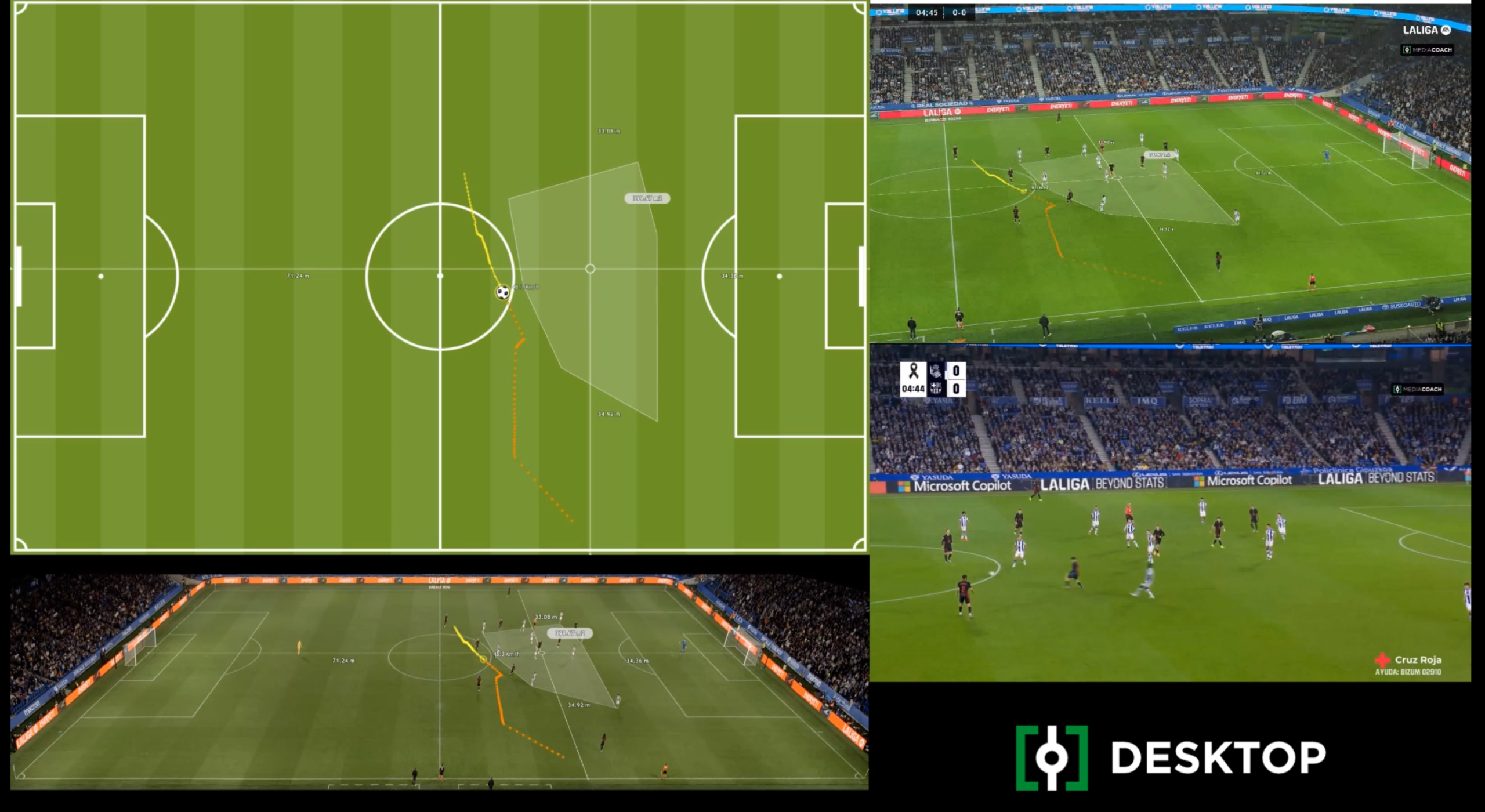
21 Nov The Defensive Block as a Unit: Enhancing Defensive Performance with Convex Hull Analysis
In modern football, good defending is not just about marking opponents or covering spaces; it’s about understanding how the defensive block moves as a unit. In our latest research, developed by LALIGA’s Football Intelligence & Sports Performance Department, we’ve created a model that simplifies the complexity of the game by focusing exclusively on the relationship between the ball and the team’s defensive block, represented by its convex hull (a geometric figure that encloses all the defensive players).
The model has been implemented in Mediacoach Desktop, where it can be analyzed post-match in detail. Moreover, work is underway to integrate this analysis into Mediacoach Live Pro, the real-time analysis tool, to provide bench-side alerts and enhance decision-making during matches. The goal is clear: to help coaches identify successful defensive patterns and spot imbalances that could lead to dangerous situations.
What Is a Convex Hull, and Why Is It Crucial for Your Defense?
The convex hull is the smallest convex area that includes all the players of a team on the field. Imagine wrapping a string around the outermost defenders—this shape represents how the team occupies space. This approach simplifies defensive analysis by eliminating distractions and focusing on the collective movements of the block relative to the ball.
Key findings from the research:
- Block compactness: Successful teams tend to maintain a compact defensive block, with a smaller area that is well-aligned with the ball’s position.
- Synchronized movement: When the defensive block moves harmoniously in response to the ball, opponents are less likely to create dangerous chances.
- Identifying imbalances: Defensive errors, such as loss of compactness or lack of synchronization, are recurring patterns in plays that lead to opponent scoring opportunities.
These findings are clearly and precisely visualized in Mediacoach Desktop, allowing coaches to thoroughly analyze defensive behavior after a match. In the future, with its integration into Mediacoach Live Pro, real-time monitoring will be possible, generating immediate alerts on critical defensive imbalances.
How to Apply These Findings to Your Team
1. Training: Strengthen Defensive Harmony
In training sessions, this model can help identify and correct defensive imbalances. For example:
- Compactness drills: Design exercises where the team practices staying compact in different areas of the field depending on the ball’s position. A compact block better covers spaces and reduces the opponent’s chances.
- Synchronized movement: Create drills where defenders work together to move as a unit. The key is for the block to always remain oriented toward the ball while maintaining consistent distances between lines and players.
2. Match Day: Detect Imbalances in Real Time
With future integration into Mediacoach Live Pro, coaches will be able to receive alerts about potential defensive imbalances during matches:
- Loss of compactness: If the convex hull’s area increases significantly, this may indicate that the team is losing compactness. A quick tactical adjustment, such as tightening the defensive lines, may be needed.
- Vulnerable spaces: If the ball easily enters the center or edges of the convex hull, this could signal marking issues or a lack of pressure in key zones, allowing coaches to make immediate adjustments from the bench.
3. Post-Match Analysis: Learn from Mistakes
In Mediacoach Desktop, coaches can already deeply analyze defensive performance after matches:
- Successful defensive moments: Identify how the defensive block maintained compactness and synchronization during opponent possessions that ended without danger.
- Defensive errors: Detect specific imbalances that allowed the opponent to create scoring opportunities, and use this information to design targeted training sessions or adjust strategies for future matches.
This positional analysis can also be applied to study the weaknesses of upcoming opponents, helping prepare more effective tactical plans for the next match.
Conclusion: A Revolutionary Defensive Model for Professional Football
Analyzing the defensive block as a standalone unit, combined with the innovative visualization in Mediacoach Desktop and its future integration into Mediacoach Live Pro, represents a significant step forward in tactical management in professional football.
This approach not only simplifies tactical analysis by focusing on the ball and the defensive block as a unit, but it also enhances the quality of post-match analysis and optimizes in-game decision-making. By focusing on clear metrics like the convex hull’s area, coaches can design more effective training sessions, plan stronger strategies, and adjust defensive organization in real time.


